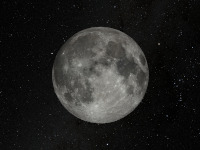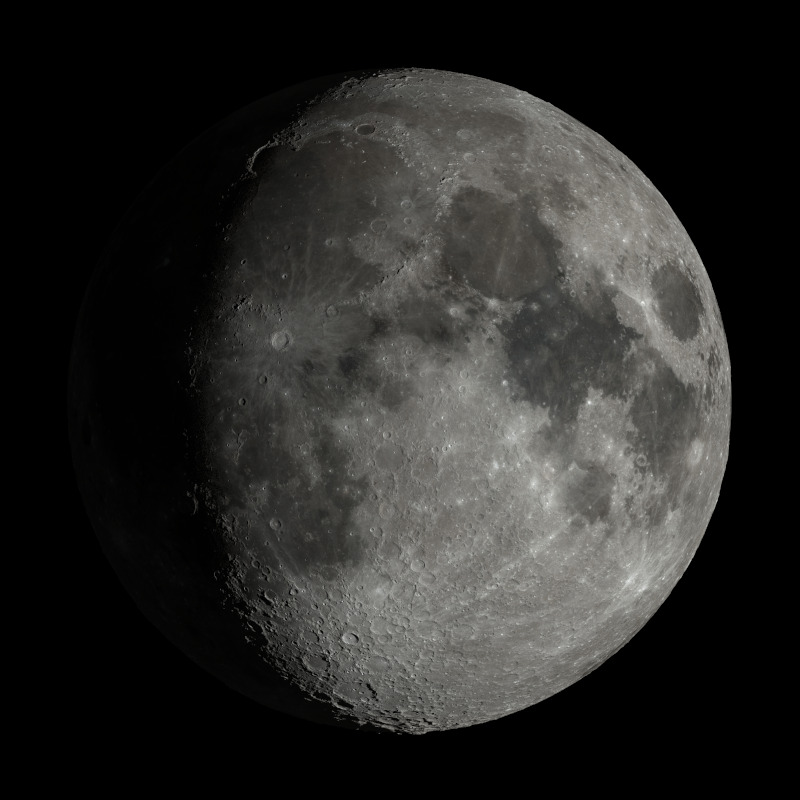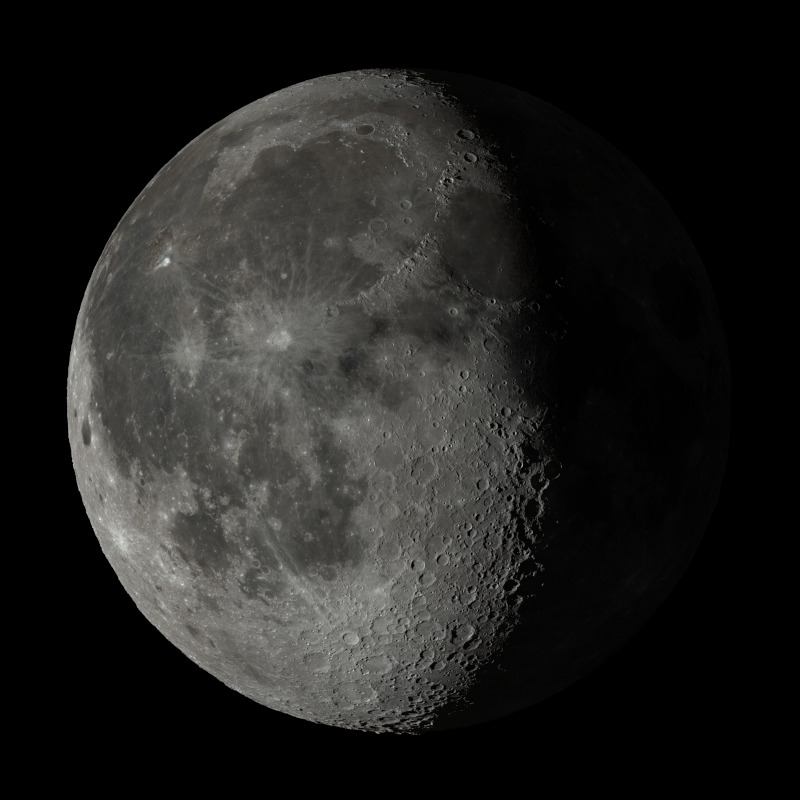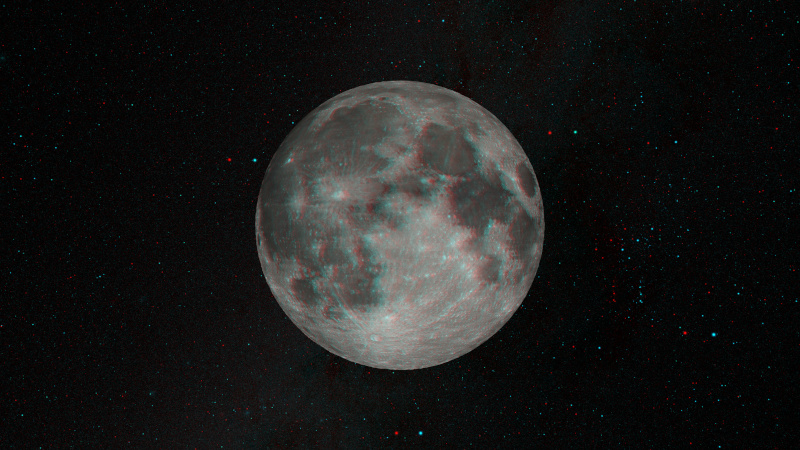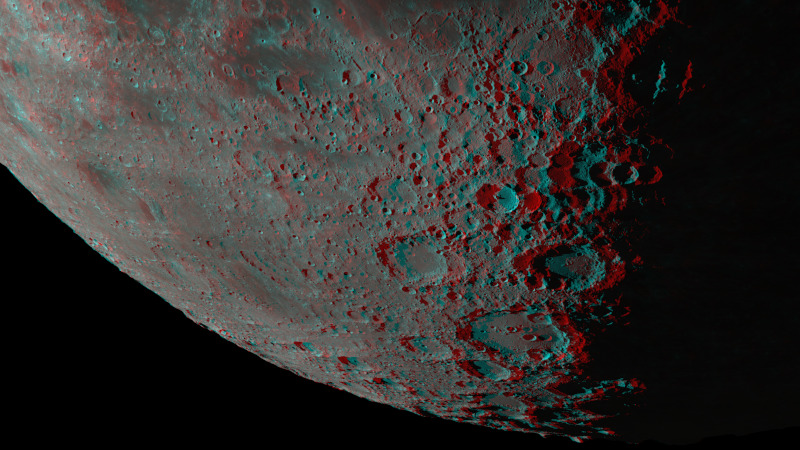Astronomy --- Moon-Renderings - First Results
With the help of Povray, I created various pictures and videos of our Moon. Everything on this site is fake, no picture is real, none was taken with a camera. If you want to learn more about the "how", I recommend my short explanation page Rendering - HowTo. Sources of the raw pictures:NASA
USGS Astrogeology Science Center
First results
The following pictures and videos are all quick shots that I created during development. They are not perfect, among other things a bit too much scribbling at the day/night border, which I may be able to improve in the next weeks.
The differences in altitude and thus the shadows are estimated to be exaggerated by a factor of 2, that means in reality the lunar surface is less bumpy.
Further results will follow, hopefully in March/April, perhaps soon on a separate website.
Global views
Cutouts / Craters
In some of the images, small errors can be detected on closer inspection, for example vertical lines especially on crater rims. It remains to be seen whether these represent the limits of the resolution, or whether I can successfully optimize the creation of the images.
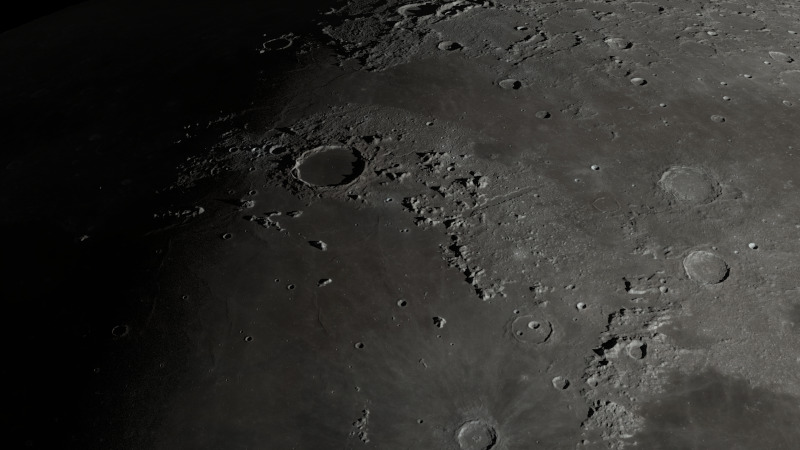
The large crater Plato to the upper left of the image is conspicuous by its flat crater floors.
Below and to the left of the picture Mare Imbrium.
Below and to the left of the picture Mare Imbrium.
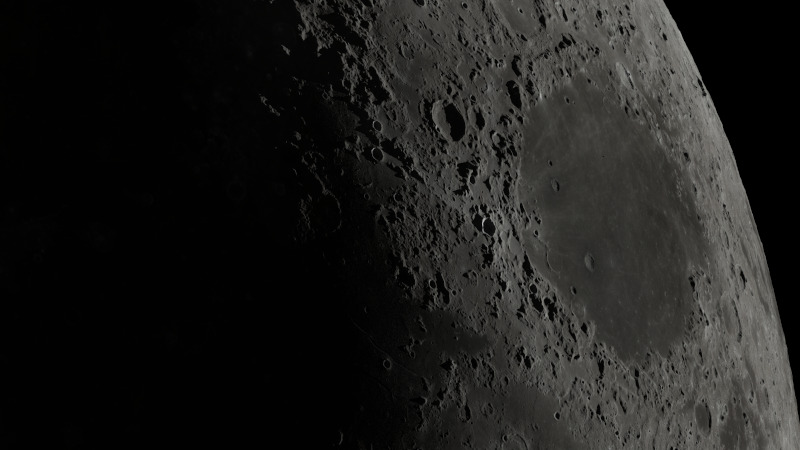
Mare Crisium
The american probe Blue Ghost landed in this on March 2, 2025.
On global views, the Mare gives the impression that there is a round "hole" on the right side of the moon's edge.
The american probe Blue Ghost landed in this on March 2, 2025.
On global views, the Mare gives the impression that there is a round "hole" on the right side of the moon's edge.
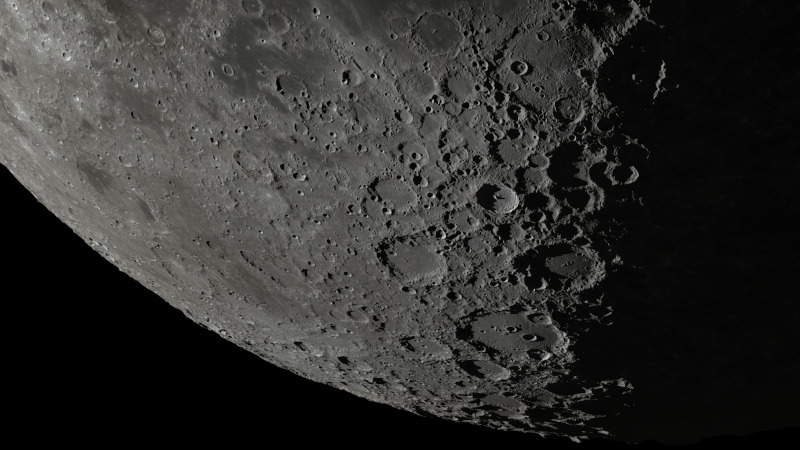
The medium-sized crater Tycho can be seen to the right of the center of the image.
It has a high central mountain and half of its interior is in shadow.
It has a high central mountain and half of its interior is in shadow.
Videos
The MP4 files can be downloaded by clicking on the three dots at the bottom right of the video.
I will also publish some videos on my Youtube-Channel, which you are welcome to like and subscribe.
Double-clicking on the video switches to fullscreen mode (recommended).
Video of the front of the Moon.
59 seconds at 15 FPS (Frmes per Second) and 885 frames total, resolution 1200x1200 pixels and 11 MB file size.
It takes 29.5 days from Newmoon to Newmoon.
Two seconds in the film corresponds to a day in the real world.
59 seconds at 15 FPS (Frmes per Second) and 885 frames total, resolution 1200x1200 pixels and 11 MB file size.
It takes 29.5 days from Newmoon to Newmoon.
Two seconds in the film corresponds to a day in the real world.
A night/day cycle of the Lunar crater Copernicus, without the completely dark hours.
To the right of the center of the picture Eratosthenes, to the bottom left in the corner Kepler. Don't follow the Terminator.
Fix a spot in the image and wait for it to pass over.
To the right of the center of the picture Eratosthenes, to the bottom left in the corner Kepler. Don't follow the Terminator.
Fix a spot in the image and wait for it to pass over.
Copernicus, unhealthily greatly enlarged
Comments
No comments at all, sorry.
* E-Mail and Website optional, E-Mail will not get published, use this only if you like to get an answer.
the german site
the english site
both sites
the english site
both sites


